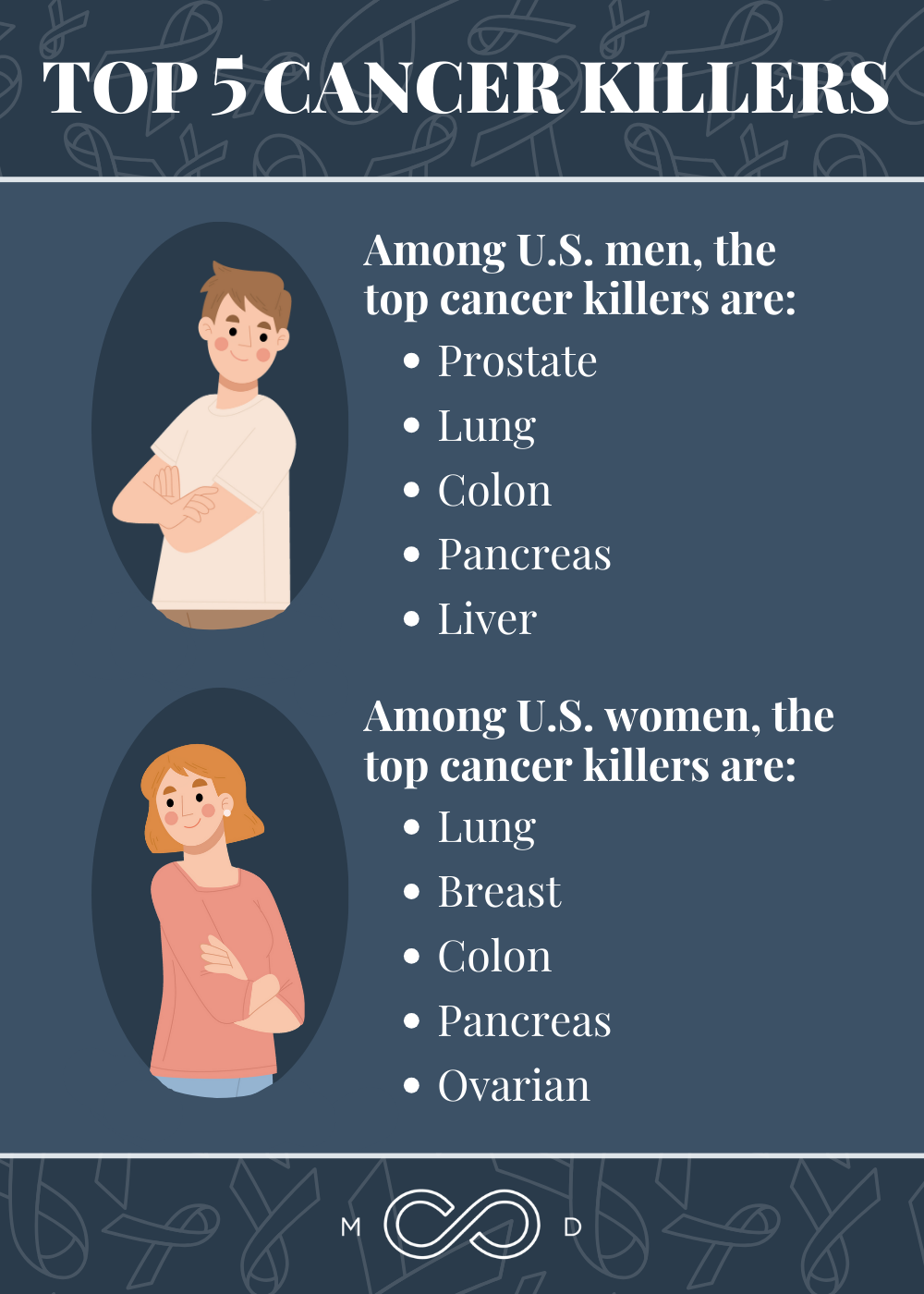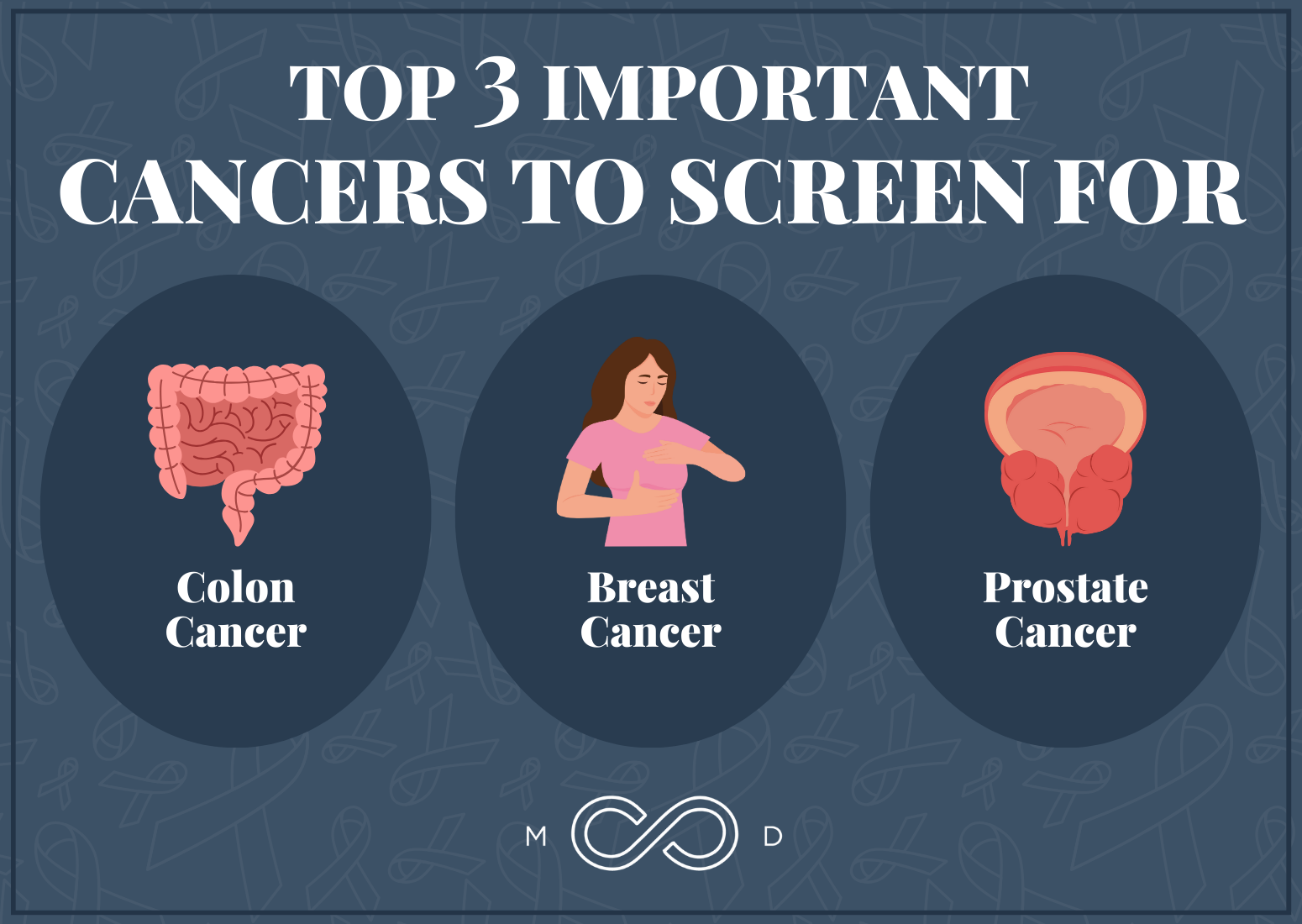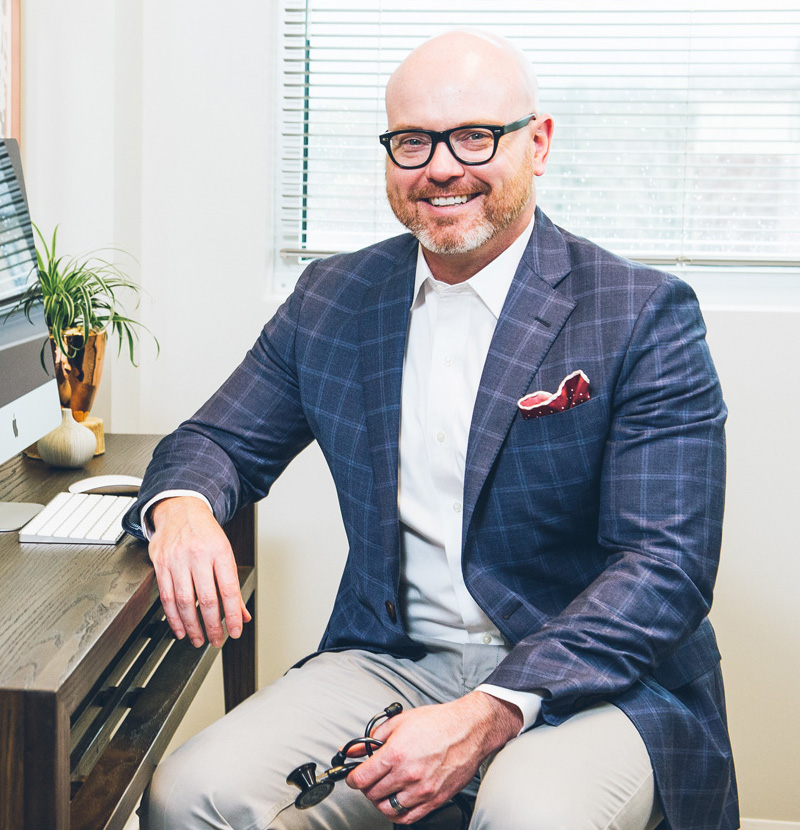Download file | Play in new window | |
We discuss a lot of cutting-edge topics on the Future of Medicine podcast. Maybe one day we’ll discuss a cure for cancer, but until then, I want to talk about the excellent screenings available right now for some of the most common cancers.
Unfortunately, not everyone takes advantage of these early detection methods. Though many of us say it’s due to busyness, in reality, fear is a driving factor. You don’t know what you don’t know, and it can seem better to remain in the dark. However, my colleague Jen Justus and I want to bring to light the life-saving importance of regular cancer screenings.
The Most Common and Most Deadly Cancers
The statistics are sobering: Cancer is the No. 2 killer of humans in the U.S., accounting for more than 600,000 deaths each year. Every person reading this has been directly or indirectly affected by cancer.
Let’s look at some of the deadliest and most commonly diagnosed cancers in the U.S.
Among U.S. men, the top five cancer killers are:
- Prostate
- Lung
- Colon
- Pancreas
- Liver
For the same group, the most commonly diagnosed cancers are:
- Prostate
- Lung
- Colon
- Bladder
- Melanoma
Among U.S. women, the top cancer killers are:
- Lung
- Breast
- Colon
- Pancreas
- Ovarian
For the same group, the most commonly diagnosed cancers are:
- Breast
- Lung
- Colon
- Uterine
- Melanoma
Cancer Screening: Find It Early, Fight It Better
We’re fortunate to have well-established screening tests for several common types of cancer. We now also have a highly accurate blood test that checks for dozens of cancers that traditionally have no screenings (more on that in a bit).
Screening recommendations come from a variety of groups, including the U.S. Preventive Services Task Force (USPSTF) and the American Cancer Society. Opinions about screening frequency vary depending on the source, so talk to your doctor. The important thing is that you get regular screenings.
With regular screenings, you might learn at some point that you have stage 1 cancer. That may sound scary, but no one dies from stage 1 cancer! The truly scary thing is putting off screenings and learning you have advanced cancer that requires aggressive treatment.
When cancers are caught early, they’re significantly more manageable and beatable! But you can’t fight it if you don’t know it’s there.
An early diagnosis gives you the opportunity to evaluate and explore options that, if implemented appropriately, should dramatically improve your outcome. A late diagnosis means you have a much shorter window in which to make decisions.
Some cancers are specific to men or women, while the majority affect both sexes. Let’s start by taking a look at female-specific screening tests.

Cancer Screenings for Women
Breast Cancer
Close to 300,000 U.S. women are diagnosed with breast cancer each year. Last year, about 43,000 U.S. women lost their lives to breast cancer.
Mammography helps detect breast cancer early. Insurance covers screening mammograms. They provide X-ray pictures of the breasts and can show tumors or abnormalities. If you have dense breast tissue, a 3D mammogram is a good option, as it provides more detail. If your doctor sees something suspicious, she will recommend a breast MRI, and then a biopsy if needed.
Typically, annual screening mammograms are recommended for women beginning around age 40. After age 55, you can switch to every two years, then continue as long as you’re in good health and you expect to live for at least 10 more years.
If you have a family history of early breast cancer, it’s best to begin annual screenings about 10 years sooner, between ages 30 and 34. In fact, this comes with a universal recommendation: If a specific cancer has shown up early in a first-degree relative, begin screening for that cancer 10 years prior to the relative’s age of diagnosis.
Regular mammograms help establish a baseline for what your breast tissue looks like. If cancer does show up, you’ll have eyes on it early. As a complement to mammograms, you can perform a monthly self-breast exam. My wife discovered breast cancer this way when she was in her 30s! Self-exams help you understand your anatomy and know what feels normal, so you can be aware of any changes.
Cervical Cancer
About 11,500 women are diagnosed with cervical cancer each year. We now know that sexually transmitted HPV (human papillomavirus) causes cervical cancer. Guidelines are evolving, but generally speaking, women are advised to get a pap smear with cervical cytology (examination of the cells of the cervix) every three years, beginning at age 21, regardless of sexual activity.
Women 30–65 can be screened every three years with cervical cytology alone, every five years with high-risk HPV (hrHPV) testing alone, or every five years with hrHPV testing in combination with cytology.
Cancer Screenings for Men
Prostate Cancer
By far, the most common cancer among men is prostate cancer. Nearly 290,000 U.S. men are diagnosed with prostate cancer each year. It generally shows up in the 50s or 60s, and the risk increases with age. By age 80, men have an 80% chance of developing it. However, when prostate cancer shows up that late in life, the general wisdom is that you’ll die with it, not from it.
While the official guidelines have fluctuated, I recommend that men get an annual PSA (prostate-specific antigen) screening starting at age 40. It’s easy, there’s no fasting, it’s dirt cheap, and it saves lives. Generally speaking, a level less than 4 means a low risk for cancer. Greater than 4, we know something is going on, such as an infection or BPH (enlarged prostate). If we can’t get clear on why the number is elevated, we do a prostate MRI, and then a biopsy if necessary.
There’s a fair amount of confusion and varied opinions about prostate cancer risk and what you can do to manage it. But right now, science is telling us that if you’re going to get it, you’re going to get it. So it’s crucial to be on the lookout, act early, and stay on offense.
Bladder Cancer
Bladder cancer is another big one for men. There aren’t great recommendations here beyond urinalysis and blood testing, which are inexpensive and simple. If we notice something off, we can use a camera to look around the bladder and identify anything concerning.
By maintaining regular touchpoints and a good relationship with your doctor, you remove bladder cancer’s chance of progressing under the radar.
Important Cancer Screenings for All Adults
Colon Cancer
Colon cancer is the No. 2 cancer killer on the planet. Yet we shouldn’t have deaths from colon cancer. It’s slow-growing and, if caught early, highly curable.
The gold standard preventive for colon cancer is a colonoscopy every 10 years, from age 45 (younger for those with a family history) to age 75. All colon cancer begins with polyps, though not every polyp becomes cancer. A colonoscopy gives your gastroenterologist the opportunity to see and remove polyps, including those that would have become cancer.
Stool tests can also be used to screen for colon cancer in people at average risk. They’re usually performed every three years. This method can be very effective for detecting colon cancer, but I’m more in favor of colonoscopies — they allow your doctor to actually see the tissue where cancer develops and take preventive action.
Talk to your doctor about which screening method makes the most sense for you.
Melanoma
Melanoma, diagnosed in nearly 100,000 Americans each year, is the most serious type of skin cancer. It is uniquely devastating because of how fast it spreads and how deep it goes.
People with fair skin and Northern European roots are at an elevated risk, but it can happen to anyone. Your primary care physician or dermatologist can perform a full-body scan at your annual exam to screen for melanoma (and other skin cancers), and you can keep an eye out for changing moles or other suspicious spots.
Lung Cancer
Lung cancer is the No. 1 cancer killer of all humans. Unfortunately, we don’t have many good screening options to detect it early. The USPSTF does recommend you have an annual low-dose CT (computer tomography) scan if you:
- Have a 20-pack-year smoking history
- Currently smoke
- Quit smoking within the past 15 years
If you’ve been smoke-free for at least 15 years, your risk normalizes. Of course, some lung cancers occur in non-smokers, with risk factors including secondhand smoke, radon, and genetics. In the U.S., 10% to 20% of lung cancers happen in nonsmokers.

Galleri by GRAIL Screens for 50+ Types of Cancer
The Galleri test by GRAIL is a simple blood test that can detect cancer cells in the blood with 99.5% specificity. A type of DNA testing is used along with computer programs that are trained to find patterns in DNA shed by cancer cells. The Galleri test screens for dozens of cancers for which there are no established screening protocols, including top killers like pancreatic, liver, and ovarian cancer.
The Galleri test is a game changer, and we recommend it for people heading into their 50s. It’s an especially good option if you have a family history of cancers that lack established screening protocols. This test isn’t covered by insurance, so it involves an out-of-pocket expense. We recommend talking to your doctor about whether it makes to include in your cancer-screening arsenal
Final Thoughts
We’re all busy, and it can be easy to let cancer screenings slide. Medical professionals are not immune! Despite her family history, even Jen delayed her first colonoscopy. She finally got it done earlier this year after our nurse proactively scheduled it for her.
It’s easy to say you’re busy and that you’ll find time later. But you must make time for the “musts.” Get your recommended screenings and consider earlier screenings if you have a strong family history of a specific cancer. And consider the Galleri test to screen for other top cancers if it makes sense for you.
We say it a lot, and it bears repeating: It’s important to find a team of trusted providers who will listen to and support your concerns. Don’t be afraid to verbalize and be vulnerable about your resistance to getting screened. It may feel scary, but remember, you are not alone.

Dr. Aaron Wenzel is a concierge physician specializing in the care of fast-moving entrepreneurs, executives, and public figures in the Nashville, TN area. Dr. Wenzel’s diverse life experience and extensive training in family medicine, emergency care, nutrition, and hormone replacement therapies give him the unique platform to provide unmatched care for his patients.







